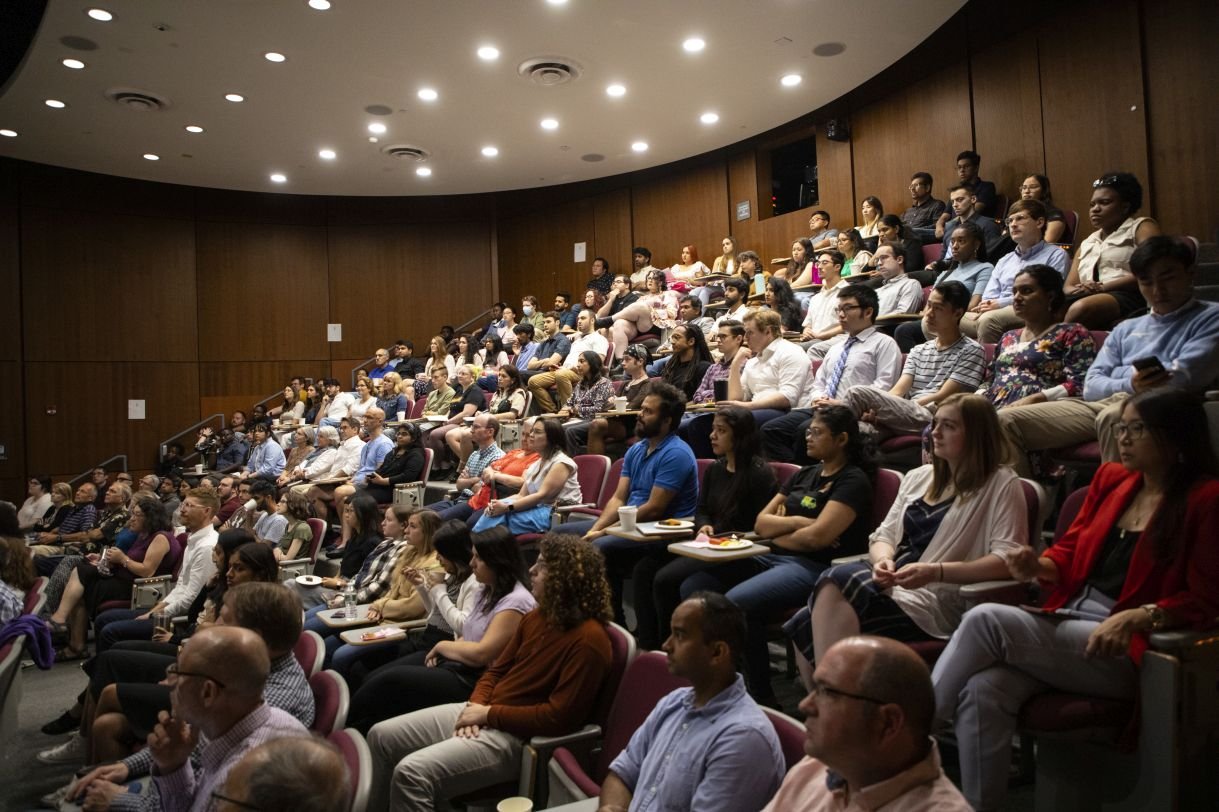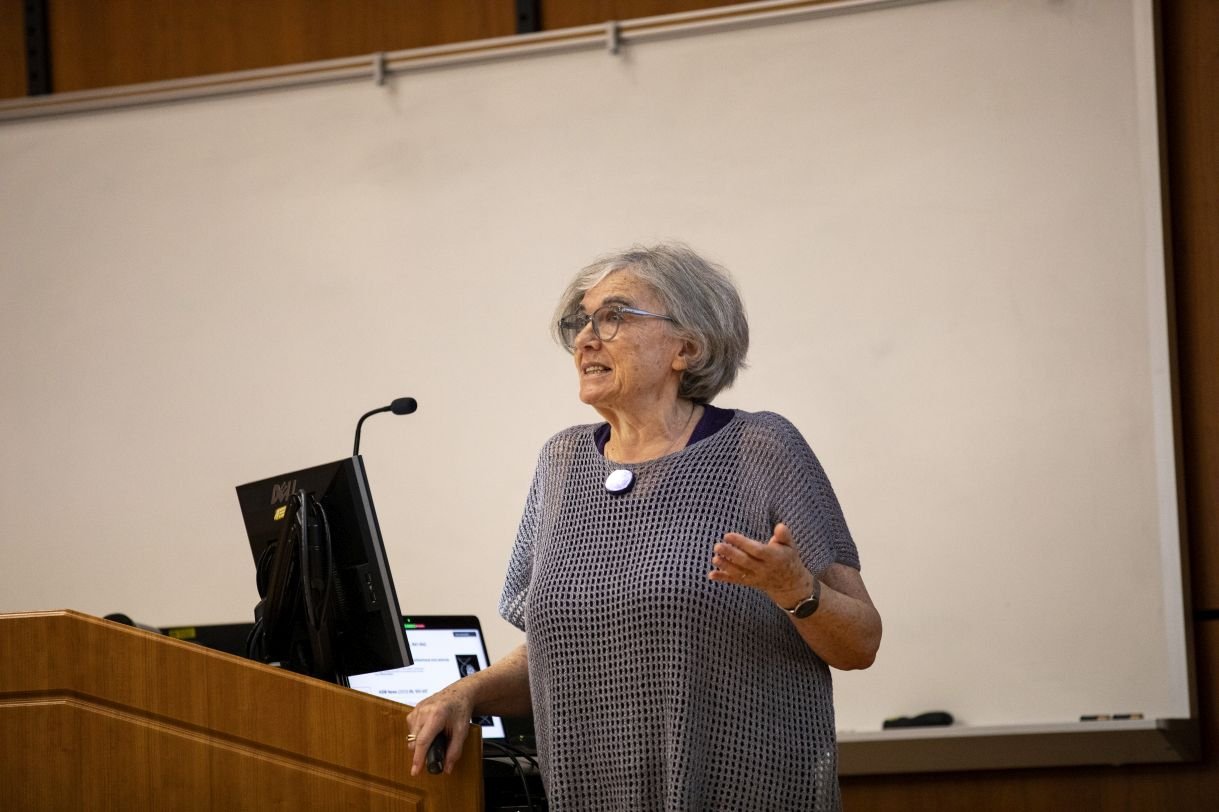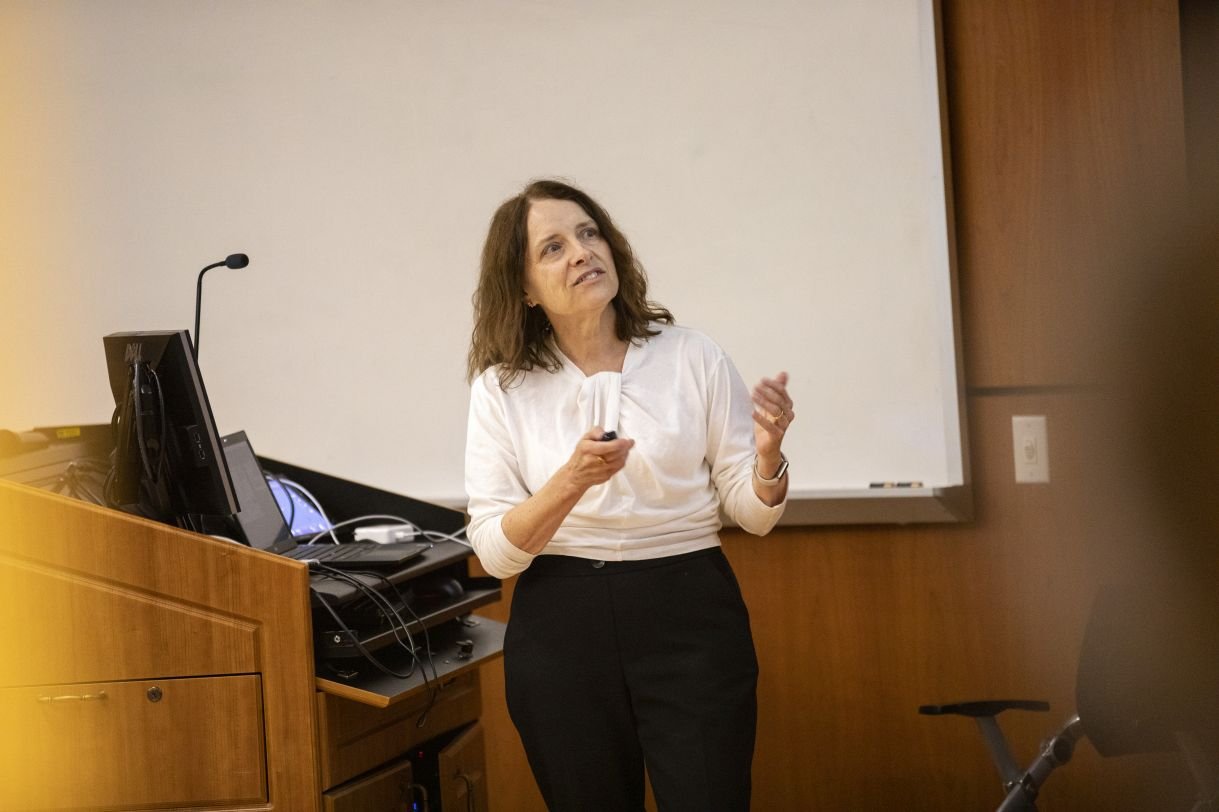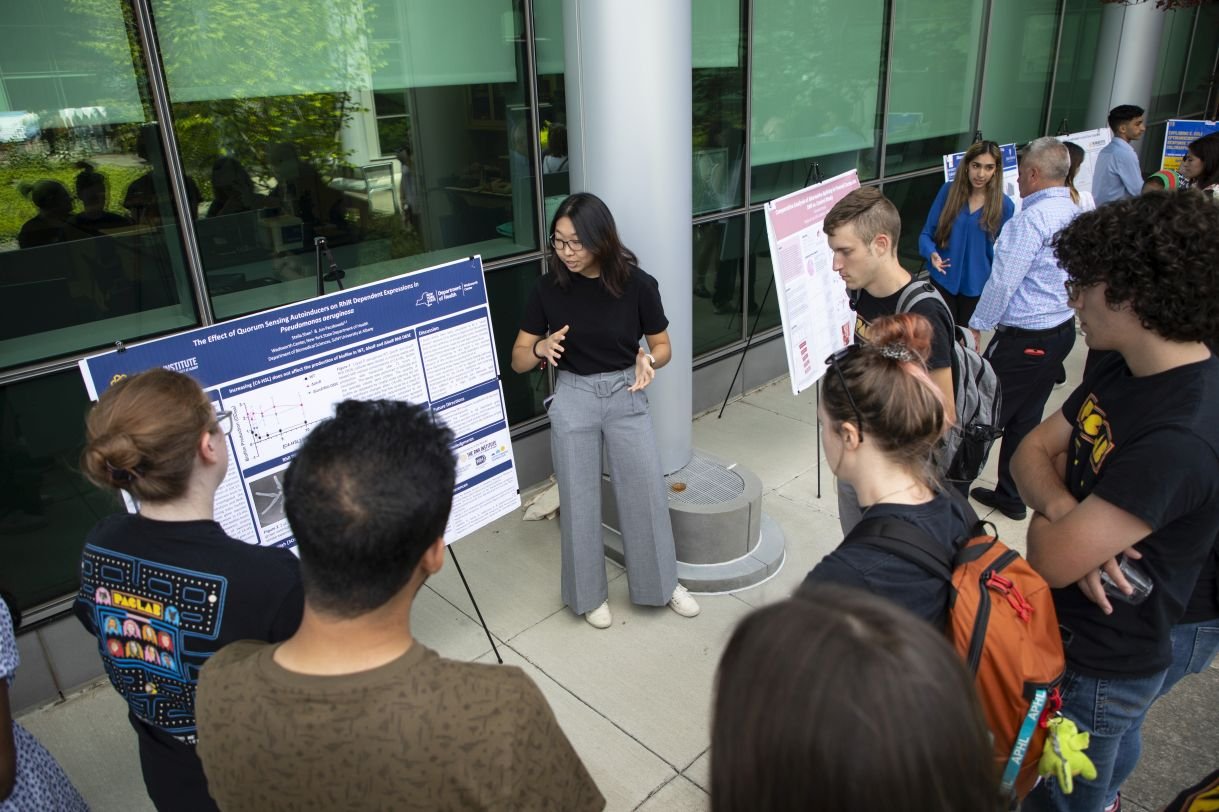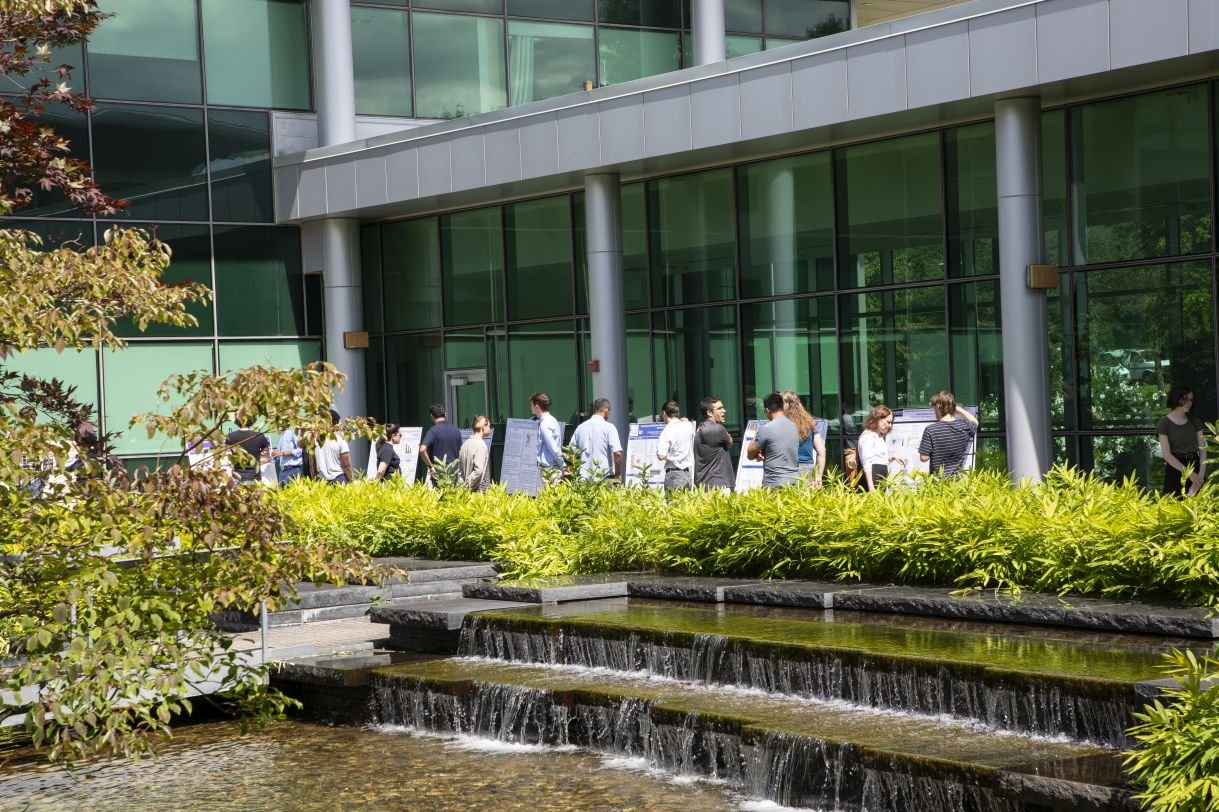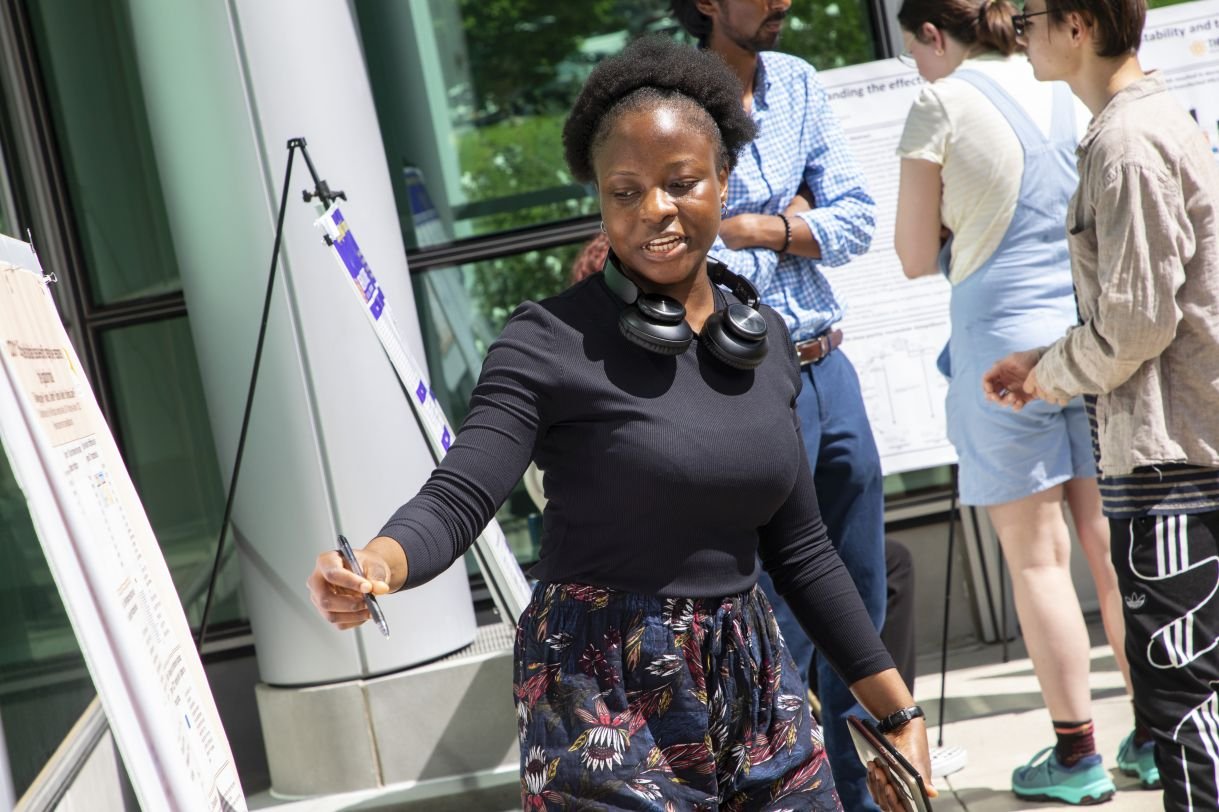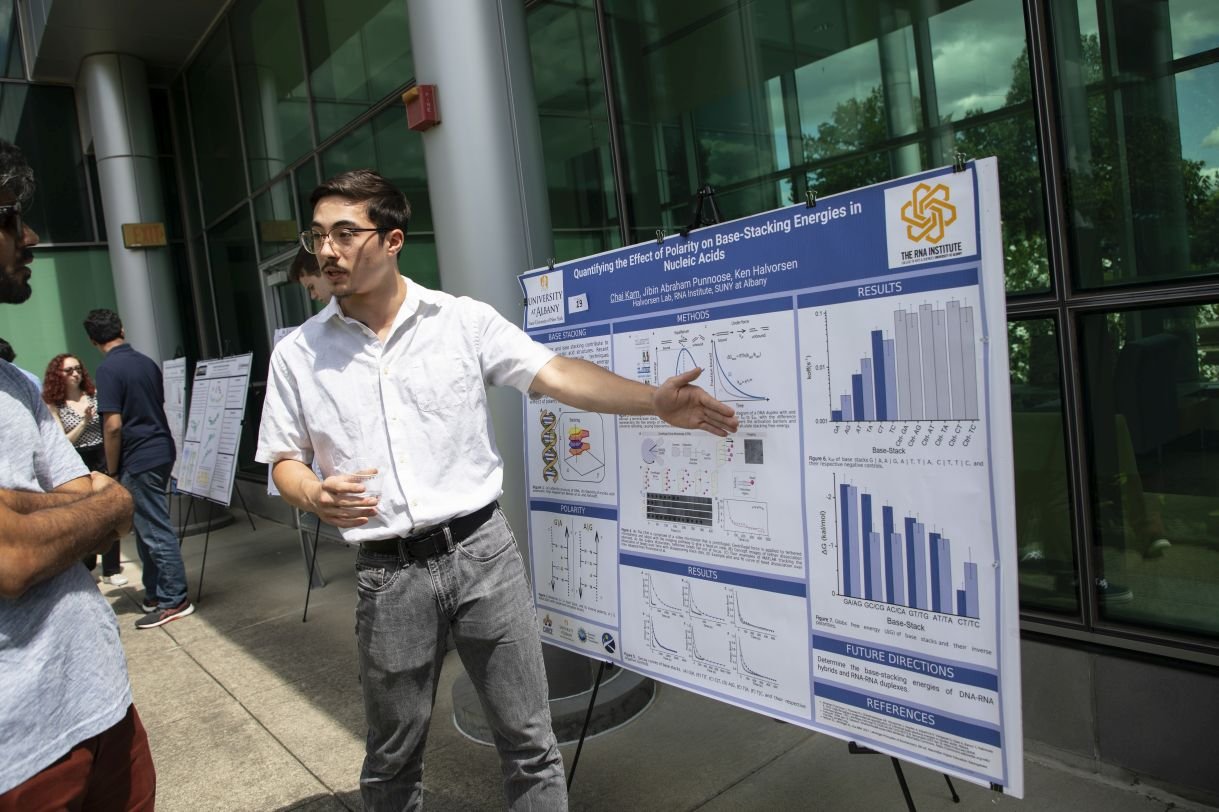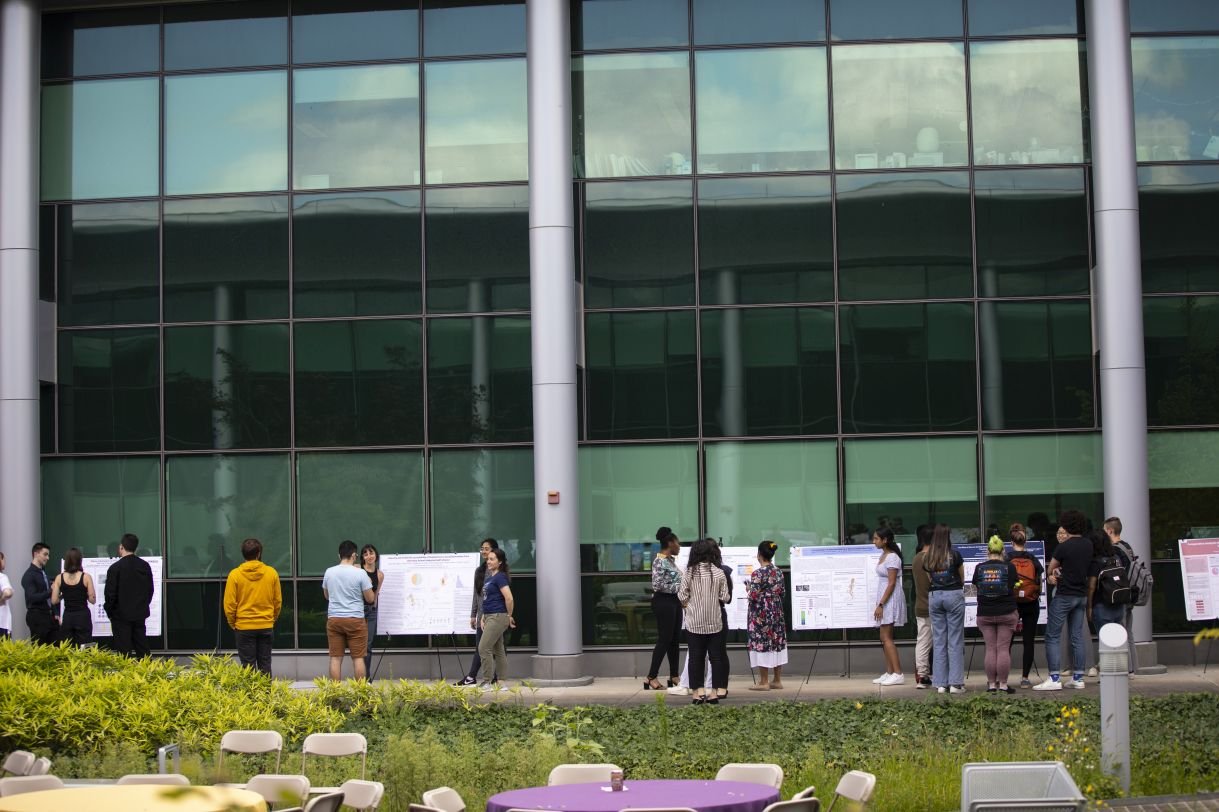UAlbany’s RNA Institute Celebrates ‘RNA Day’
By Erin Frick
ALBANY, N.Y. (Aug. 15, 2023) — The RNA Institute at the University at Albany’s College of Arts and Sciences recently hosted its inaugural “RNA Day” celebration, a full-day affair marked by two inspiring keynote talks, a student poster session, networking opportunities and a science bakeoff.
For anyone familiar with RNA science, the reason that RNA Day is recognized on Aug. 1 will be evident; for everyone else: “AUG” correlates with three of the four nucleobases that make up ribonucleic acid (RNA) — adenine, uracil and guanine; the AUG code is also necessary for making proteins.
To kick off the day, Marlene Belfort, distinguished professor of biomedical and biological sciences at UAlbany and senior advisor of the RNA Institute, presented a science-life retrospective, offering an overview of the history of RNA science along with personal reflections on her academic career and the value of “work-life integration.”
Sally Temple, research professor at UAlbany’s School of Public Health and scientific director of the Neural Stem Cell Institute, next presented an overview of her work on developing brain organoids derived from stem cells to study “tauopathy,” a type of neurodegenerative disorder.
Spotlight on Student Research
In the afternoon, 43 student researchers shared findings from their summer experiences working with RNA Institute mentors. The Institute ran three distinct research programs for students this summer including an in-person fellowship program, a remote bioinformatics program and the inaugural “Research Experiences for Undergraduates” (REU) program.
These programs collectively engaged 77 students from across the U.S. and the world, including undergrads, grad students and several students from local high schools. Projects explored topics in chemistry, biology, biochemistry, DNA nanotechnology and bioinformatics.
“Community events such as ‘RNA Day’ provide a valuable forum for scholars and students from across our campus and other institutions to come together and share research ideas one-on-one,” said Jeanette Altarriba, dean of the College of Arts and Sciences and professor in the Department of Psychology. “Events like these are especially important for students and offer a chance for them to present their work and gain new ideas from peers as well as more experienced researchers. It’s also a great opportunity for new and aspiring researchers to explore the many educational and career opportunities available at UAlbany.”
Baking Science
While research ruled the day, the bakers of the RNA Institute had a chance to show off their culinary chops too. Expanding a tradition that Gabriele Fuchs, assistant professor of biological sciences, initiated in her lab in 2018, the celebration concluded with a science bakeoff, with a dozen entrants vying for the titles of most creative and best taste.
“When the RNA Society first announced the idea of celebrating ‘RNA Day’ on August 1, I had the idea to bake science-themed birthday cakes for the occasion, so I started the science bakeoff at the RNA Institute,” Fuchs said. “With the science-themed baking, I wanted to inspire students to think about their science creatively. Many people don’t realize the extent to which science is a creative process — creativity is critical to all sorts of problem solving — so it’s important to exercise that sort of thinking in the lab setting and beyond. The bakeoff offers an outlet to encourage that.”
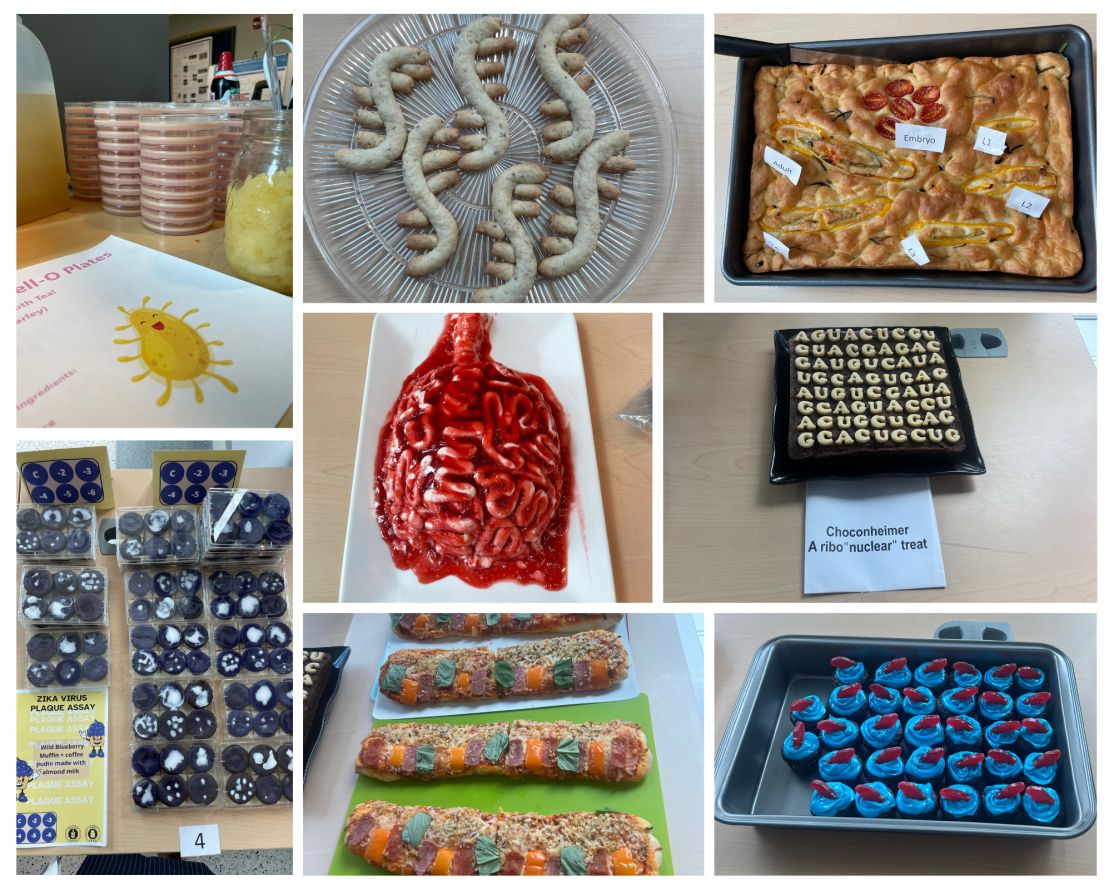
REU student Max Kugler’s entry — anise-flavored “RNA cookies” shaped like nucleic acid strands — won for best taste. A “brain cake” made by PhD student Nick Mathias won most creative. The brain-shaped red velvet confection was intricately piped with white cream cheese frosting and covered in strawberry jam.
“Science is a very creative process and that is why I love it so much,” said Mathias, who works on developmental neuroscience with Paolo Forni, associate professor in the Department of Biological Sciences. “While we have to abide by strict constraints much of the time, it helps to approach both problems and mundane processes from more than one perspective. The bake-off allowed us all to have fewer constraints and a bit more fun!”
In the lab, Mathias is working to clarify the process by which stems cells differentiate into specific neuron types.
“In pursuit of this goal, our lab utilizes immunofluorescence and microscopy to capture stunning images of neurons as their machinery fluoresces various colors,” said Mathias. “A lot of our work considers art as well. My mentor Dr. Forni is a talented artist and directs us to use our images and artistic creations to communicate our science with the community.
“Science doesn’t work well alone; its success is due to the collective efforts of people from around the world and throughout time. Art can be found in many forms of communication that tie the scientific community together — whether it be illustrations, images or linguistic talent. In this way, science and art are inextricable.”
Other inspired entries this year included: Jell-O petri dishes, “Mitochondria munch: Oxidative stress buster cake,” a Zika virus plaque assay made of blueberry muffins streaked with coffee pudding, “Choconheimer brownie: A ribo ‘nuclear’ treat,” and a depiction of the lifecycle of C. elegans illustrated in vegetables arranged on focaccia bread.





